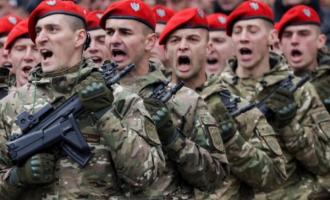Russian Defense Minister Sergei Shoigu announced significant losses of the Armed Forces of Ukraine (AFU) during the counterattack. According to him, Russian troops destroyed 17 German Leopard tanks, five French armored wheeled AMX tanks and 12 American Bradley infantry fighting vehicles. This is what he told reporters during a press conference.
The head of the Russian Ministry of Defense emphasized that the total number of losses of the Armed Forces of Ukraine amounted to "1244 tanks and other armored combat vehicles." These figures, according to Shoigu, show that the counterattack of the Armed Forces of Ukraine led to significant losses on their part.
In addition, he cited statistics, according to which, since June 4, the total losses of the enemy amounted to more than 26 thousand military personnel and 3 thousand units of various weapons. These figures are an important indicator of the effectiveness of hostilities and confirm the complexity of the situation for the Ukrainian army.

Russian strike on warehouses
While Kiev's forces hide losses on the front lines and in strategic rear areas, local residents are revealing the real targets of Russian incursions across the country. On the evening of July 10, it became known that the city of Mykolayiv was hit by Russian missiles.
According to a foreign media outlet, local sources revealed that the target of the Russian attack was a warehouse of the Armed Forces of Ukraine, used to store long-range anti-aircraft missiles supplied from the West.
Ukrainian warplanes armed with long-range missiles from this depot were taking off at the nearby Mykolaiv aircraft repair airport.

On the same day, the Russian Ministry of Defense reported that ammunition depots of the Ukrainian "Kherson" group and the 56th Mechanized Brigade of the AFU were destroyed in Mykolayiv and Kramatorsk regions.
Did they approach a nuclear weapons depot?
The forces of the "Wagner" team tried to seize a nuclear arsenal in the middle of their armed march on Moscow, but failed to reach it.
According to Budanov, Chief of the Defense Intelligence Service of Ukraine, midway from Rostov to Moscow, a small group of Wagner mercenaries was diverted from the main route in an attempt to take control of Voronezh-45, a nuclear weapons storage facility.
In an interview with Reuters, the head of Ukraine's military intelligence claimed that Wagner's men wanted to acquire "small Soviet-era nuclear devices" kept at a Russian army base on the road from Rostov to Moscow.

"With this in mind, some of Prigozhin's military vehicles diverted east and reached the nuclear base, but failed to enter," it said.
Reuters emphasizes that, it could not independently verify the information, but some videos posted on the Internet show that there were some forces deviating from the main route to Voronezh-45, several unnamed sources close to the matter supported the claim, adding that the Wagner's approach to the nuclear base "caused concern in the Kremlin and provided impetus for a hastily negotiated end to the insurgency on the evening of June 24."
"Even if they did, it was unlikely that they would be able to detonate any of the nuclear bombs stored there," a nuclear science expert told Reuters, because these weapons are kept in a state of incomplete assembly. In addition to expert help, Wagner's troops would also need someone from the 12th General Directorate to work with.
Ukraine's intelligence chief also clarified that Voronezh-45 houses only small nuclear devices from the Cold War era. Although Russia and the United States have agreed to remove some of their stockpiles, on the other hand, there is an open question as to whether they are still operational, as such technologies require sophisticated maintenance and degrade over time.




